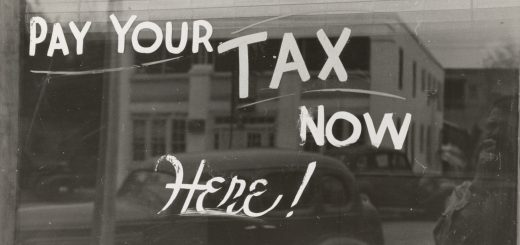SCC Refuses to Extend Random Sobriety Stop Power to Private Property: R v McColman

Driving, as a licensed activity, carries certain limitations. Perhaps most important among them is the prohibition against driving while impaired. But the law cannot reach every corner of a person’s life. At a certain point, privacy interests come into play. To be a driver in Ontario is to drive a vehicle on a “highway”—that is, a public road. Police must respect that boundary when conducting a sobriety stop, says the Supreme Court of Canada (the “Court”) in its decision in R v McColman, 2023 SCC 8 [McColman].
Facts
In March 2016, Walker McColman was stopped by two Constables of the Ontario Provincial Police after he had driven an ATV off of a public road (McColman, paras 3-5). The ATV had parked on a private driveway and Mr McColman had exited the vehicle immediately before Csts Lobsinger and Hicks approached him to perform a random sobriety stop (McColman, paras 3-5). Mr McColman admitted to consuming ten beers and the Csts took him to the police station (McColman, para 6). At the police station, Mr McColman participated in two breathalyzer tests, which reported a blood alcohol content (“BAC”) of 120, and then 110, milligrams of alcohol in 100 millilitres of blood (“mg/ml”) (McColman, para 7).
Mr McColman was charged with impaired driving “over 80”. On a Charter application alleging a breach of his s. 9 rights, the trial judge found no breach (McColman, paras 12-15). A summary conviction appeal judge found that Mr McColman was not a “driver” within the meaning of the Highway Traffic Act, RSO 1990, c H.8 (“HTA”) at the time of the stop (McColman, paras 16-17). The trial judge thus found no lawful stopping power. They overturned Mr McColman’s conviction and ordered a new trial with the breathalyzer evidence excluded under s. 24(2) (McColman, para 18). The Court of Appeal for Ontario (“ONCA”) split 2-1, affirmed the summary conviction appeal judge’s decision (McColman, paras 19-22; see R v McColman, 2021 ONCA 382).
The Unanimous Decision of the Court
The decision turned on whether Mr McColman was a “driver” within the meaning of the HTA at the time that Csts Lobsinger and Hicks performed the sobriety stop. If he was not, Mr McColman’s s. 9 Charter rights were breached, and the Court had to consider whether to exclude the breathalyzer evidence under s. 24(2).
A “Driver” Must be on a Highway
Writing for a unanimous Court, Chief Justice Wagner and Justice O’Bonsawin clarified that s. 48(18) of the HTA, which states that a driver is a person who has “care and control of a vehicle”, is a limited addition to the general definition of “driver” in the statute (HTA, s. 1(1)). In making this determination, the Court distinguished between an exhaustive and non-exhaustive definition under statutory interpretation rules (McColman, para 38). The general definition provision is an exhaustive definition—it did not leave open alternate definitions. By contrast, the definition in s. 48(18) is non-exhaustive. It adds to the definition in s. 1(1) but does not displace it. Thus, a person is a “driver” for the purpose of s. 48 of the HTA when they either drive or have care and control of a vehicle on a highway (McColman, para 39).
As Mr McColman was not on a highway when he was stopped, regardless of whether he had care and control of the ATV, he was not a “driver” within the meaning of the HTA (McColman, para 41).
For the Court, the Crown’s argument that police had formed the intention to stop Mr McColman while he was a “driver” was not convincing. The duty imposed on drivers to stop when the police signal or request that they stop has an altogether different purpose than the sobriety check power (McColman, para 44). Even though s. 48(1) does not contain any language requiring that police communicate the intention to stop, s. 216(1) of the HTA requires that police do signal that intention, which creates the duty to stop. Reading the provisions together, when police do not communicate their intention to stop under s. 48(1) while the driver is on a highway, the police have no lawful authority under s. 48(1) to stop the driver (McColman, para 45).
Importantly, the Court preserved the ability of police to effect a sobriety stop on private property where they have reasonable and probable grounds to stop that driver (McColman, para 49). The dissenting judgment in the ONCA expressed concern that, if the police could not perform a sobriety stop on private property, the stopping power may be frustrated by drivers who pull off of a highway to evade the police (also called the “sanctuary finding”, which I discussed in my earlier post on this case). The Court addressed this concern squarely. Drivers will not escape sobriety checks simply by pulling off the highway, if their driving gives the police a reason to believe that they are operating a vehicle while impaired (McColman, para 48). That belief must meet the threshold of reasonable and probable grounds, a standard which must contain a subjective belief on the part of the officer as well as objective facts that support that belief (for more on the reasonable and probable grounds standard, see R v Chehil, 2013 SCC 49).
Appeal Allowed: The Evidence Should Not Have Been Excluded
As the Court determined that Mr McColman was not a “driver” at the time of the stop, the stop was an unlawful detention under s. 9 of the Charter. Given the breach, the Court had to determine whether the evidence should have been excluded. The trial judge did not perform a Grant analysis because he found no breach of s. 9.
Despite agreeing with the ONCA that Mr McColman’s s. 9 rights were breached, the Court disagreed about the exclusion of evidence under s. 24(2). While the first two factors in the analysis pulled toward exclusion (McColman, paras 60, 68), the case was determined under the third factor: admitting the evidence would not bring the administration of justice into disrepute.
The Court found that the breathalyzer evidence collected was both reliable and crucial to the Crown’s case, the two considerations under the third Grant factor (McColman, para 71). Impaired driving, in the Court’s view, is a serious offence that leads to “death, injury, heartbreak and destruction” (R v Lacasse, 2015 SCC 64, cited in McColman, para 72). All of this together meant that the third Grant factor pulled “strongly” in favour of including the evidence (McColman, para 72).
With the first two factors pulling only slightly toward exclusion, but the third factor pulling strongly toward inclusion, the Court then balanced the three factors together. The Court reaffirmed, as it has in two other recent cases (R v Lafrance, 2022 SCC 32 and R v Beaver, 2022 SCC 54) that the first two factors cumulatively weigh against the third. On balance, the third factor tipped the scale and the evidence should have been included (McColman, para 74).
Accordingly, the Court allowed the appeal and restored Mr McColman’s conviction (McColman, para 75).
The Court Effectively Holds the Boundary between Privacy and Public Safety
Protecting Canadians’ Privacy by Upholding Limits on Police Powers
The Court has consistently held that Canadians’ right to privacy is perhaps strongest in their own home (see R v Stairs, 2022 SCC 11). Part of maintaining a meaningful right to privacy is creating clear boundaries that protect private areas from intrusion by state actors. While the police need authorization for certain abilities, like executing search warrants in private areas, courts have been careful not to extend those abilities too far. Where an extended police power is not consistent with Parliament’s intention, courts should be declining to expand police powers unduly.
In this case, the Court has upheld a clear boundary: police powers that do not expressly extend onto private property cannot be conducted on private property. Of course, the Court upheld a limited exception to that broad statement. But when the potential expansion of a police power is before the Courts, Canadians tend to take strong positions on whether that extra power should or should not be granted. In this case, the Court made a wise decision not to subject its citizens to random stops in areas where they should be free to live without police interference: their own property.
Upholding these clear boundaries is important in a democratic society that values the divide between what is public and what is private. Still, the Court continues to recognize that where public safety is on the line, certain privacy concerns need to be made more flexible. Canadian criminal law has an answer to that concern: the reasonable and probable grounds standard, which allows police to execute certain powers in contexts where it might be necessary to investigate or prevent an offence.
The Court’s limitation on police stopping powers in McColman maintains that flexibility. It can yield in the presence of reasonable and probable grounds, where public safety concerns outweigh an individual’s privacy concerns. But absent a legal justification to intrude on privacy, the law protects Canadians.
Keeping Focus on the Harm caused by Impaired Driving
The Court’s interpretation of “driver” in s. 48 of the HTA protects public safety by staying true to the purpose of the provision. The harm to be addressed is impaired driving, which Hourigan, JA called a “scourge in our society” (R v McColman, 2021 ONCA 382, para 93). To understand how these ideas are linked, one must understand the licensing scheme that governs all drivers licensed in Ontario.
A probationary driver (a G1 licensee) is permitted to drive under certain conditions, one of which is always the presence of a fully licensed driver riding in the passenger seat (Drivers’ Licenses, O Reg 340/94, s. 5). G1-licensed drivers must have a BAC of 0 mg/ml. But a G-licensed driver may operate a vehicle with a BAC up to 80 mg/ml (the “80” in “over 80” offences). When a G-licensed driver accompanies a G1-licensed driver, the G-licensed driver must have a BAC under 50 mg/ml. This is because, although the G-licensed driver is not driving the vehicle, they retain care and control of the vehicle.
While a G1-licensed driver must have a BAC of 0 mg/ml, there is still a danger of impaired driving when the person responsible for supervising that driver is drunk. The definition of “driver” in s. 48(18) of the HTA thus permits police to conduct a random sobriety stop not only on the person driving a vehicle on a highway, but also to a person with care and control of that vehicle. This permits police to perform a sobriety check on the G-licensed passenger with care and control of a vehicle being driven by a G1-licensee.
Upholding an Important Boundary
It will come as no surprise to readers of TheCourt.ca that I am pleased with the Court’s reasons in this regard. It was open to the Court to find a common law or statutory police power, but they declined. This protects our most vulnerable persons from undue interference based on a random stopping power divorced from its important public safety purpose. As I stated in my Appeal Watch post on this same case:
Random stops disproportionately affect people of colour and thus exacerbate people of colour’s now widely recognized societal disadvantage. Random stops are, by their very nature, arbitrary, even if aimed at a specific mischief. In order to stop members of the public, even for sobriety checks, police should have at minimum a reasonable suspicion that there is a need to interfere.
The Court’s decision in McColman thus upholds a boundary that is important for protecting the privacy of the most often affected Canadians. It also keeps the focus of the random stopping power squarely where it should be: on the harm caused by impaired driving, and not on some surveillance-like enforcement power that targets Canadians at “random”.







Join the conversation